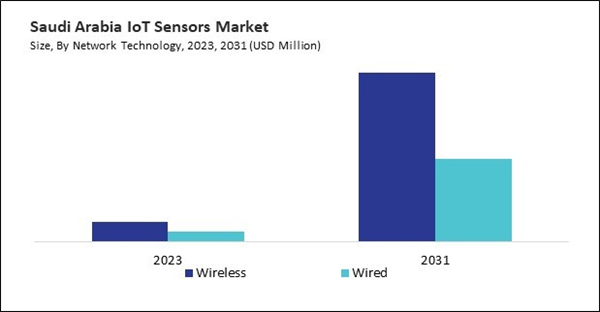The Brazil market dominated the LAMEA IoT Sensors Market by Country in 2023, and would continue to be a dominant market till 2031; thereby, achieving a market value of $3.50 billion by 2031. The Argentina market is showcasing a CAGR of 32% during 2024-2031. Additionally, the UAE market would register a CAGR of 30.3% during 2024-2031.
One key application of these sensors in Industry 4.0 is predictive maintenance. By monitoring equipment in real-time, sensors can detect early signs of potential failures, allowing companies to perform maintenance just in time to prevent costly downtime. For example, BMW uses IoT sensors in its production facilities to monitor machinery health, helping to avoid unexpected breakdowns and maintain production schedules. This proactive approach improves operational efficiency and extends the lifespan of equipment.
Although these sensors markets have the potential to experience significant growth, there are still numerous obstacles that must be overcome in order to completely capitalize on the advantages of IoT technology. One of the most significant challenges is data overload and management. These sensors generate vast amounts of data, and without the proper infrastructure and tools in place, businesses may struggle to manage and analyze this data effectively. At times, the mere volume of data can be overwhelming, resulting in inefficiencies and the inability of companies to extract actionable insights. Another challenge facing this market is the issue of security. As IoT devices become more prevalent, they become more attractive cyberattack targets.
The LAMEA region is experiencing a growing demand for these sensors, driven by rapid urbanization, industrialization, and increasing digital transformation across various sectors. As nations in this region look to modernize their economies and improve the efficiency of essential businesses, the use of Internet of Things technology is gaining speed. Brazil is one of the largest markets for consumer electronics in Latin America, with a rapidly growing middle class driving the adoption of smart devices. These sensors are integral to the functionality of various consumer electronics, including smartphones, smart TVs, and home automation systems. Through its "IoT Chamber" initiative under the Ministry of Science, Technology, and Innovations, the Brazilian government is promoting the development and adoption of IoT technologies across the country. In Brazil, it is projected that the expansion of the Internet of Things sensors would be further stimulated by the growing demand for connected devices as well as the increasing use of technologies that provide smart homes. Therefore, as regional governments and industries continue to invest in digital transformation and modernization, the demand for these sensors is expected to rise.
List of Key Companies Profiled
- STMicroelectronics N.V.
- NXP Semiconductors N.V.
- Honeywell International, Inc.
- Siemens AG
- Robert Bosch GmbH
- Infineon Technologies AG
- ABB Group
- General Electric Company
- Texas Instruments, Inc.
- Sensirion AG
Market Report Segmentation
By Network Technology
- Wireless
- Bluetooth
- Bluetooth Smart
- Bluetooth Smart/Ant+
- Bluetooth 5
- Wi-Fi
- Zigbee
- Z-Wave
- NFC
- RFID
- Others
- Wired
By End Use
- Consumer Electronics
- Automotive
- Industrial
- Healthcare
- Food & Beverage
- Aerospace & Defense
- Others
By Type
- Pressure Sensor
- Temperature Sensor
- Proximity Sensor
- Image Sensor
- Optical Sensor
- Gyroscope Sensor
- Humidity Sensor
- Accelerometer Sensor
- Others
By Country
- Brazil
- Argentina
- UAE
- Saudi Arabia
- South Africa
- Nigeria
- Rest of LAMEA
Table of Contents
Companies Mentioned
- STMicroelectronics N.V.
- NXP Semiconductors N.V.
- Honeywell International, Inc.
- Siemens AG
- Robert Bosch GmbH
- Infineon Technologies AG
- ABB Group
- General Electric Company
- Texas Instruments, Inc.
- Sensirion AG
Methodology

LOADING...









